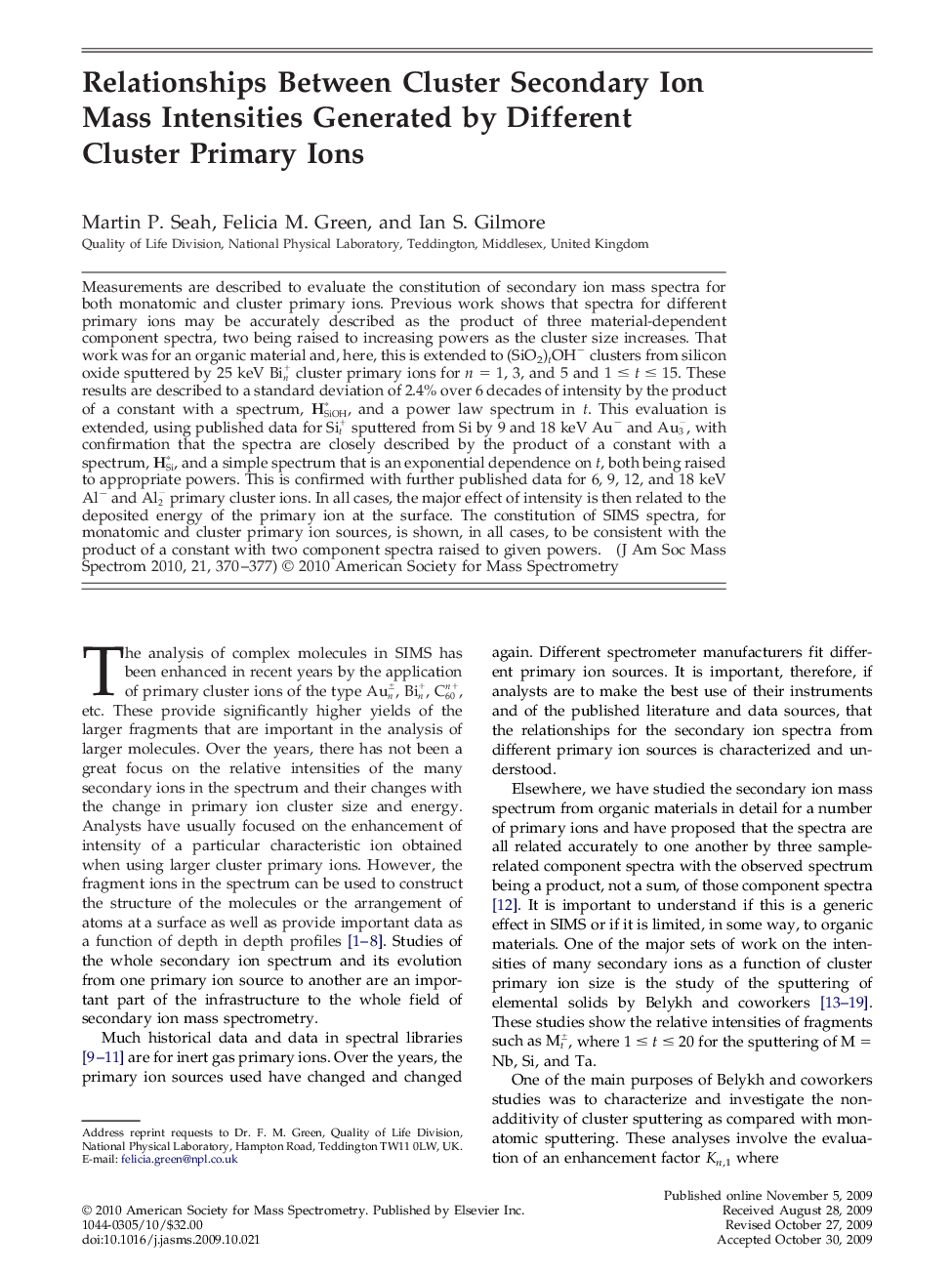| Article ID | Journal | Published Year | Pages | File Type |
|---|---|---|---|---|
| 1196345 | Journal of the American Society for Mass Spectrometry | 2010 | 8 Pages |
Measurements are described to evaluate the constitution of secondary ion mass spectra for both monatomic and cluster primary ions. Previous work shows that spectra for different primary ions may be accurately described as the product of three material-dependent component spectra, two being raised to increasing powers as the cluster size increases. That work was for an organic material and, here, this is extended to (SiO2)tOH− clusters from silicon oxide sputtered by 25 keV Bin+ cluster primary ions for n = 1, 3, and 5 and 1 ≤ t ≤ 15. These results are described to a standard deviation of 2.4% over 6 decades of intensity by the product of a constant with a spectrum, HSiOH∗, and a power law spectrum in t . This evaluation is extended, using published data for Sit+ sputtered from Si by 9 and 18 keV Au− and Au3−, with confirmation that the spectra are closely described by the product of a constant with a spectrum, HSi∗, and a simple spectrum that is an exponential dependence on t, both being raised to appropriate powers. This is confirmed with further published data for 6, 9, 12, and 18 keV Al− and Al2− primary cluster ions. In all cases, the major effect of intensity is then related to the deposited energy of the primary ion at the surface. The constitution of SIMS spectra, for monatomic and cluster primary ion sources, is shown, in all cases, to be consistent with the product of a constant with two component spectra raised to given powers.
Graphical AbstractSIMS spectra for cluster primary ions are accurately decomposed into parts that reflect aspects of the cascade and of solid-state bonding with secondary ion size.Figure optionsDownload full-size imageDownload high-quality image (165 K)Download as PowerPoint slide
